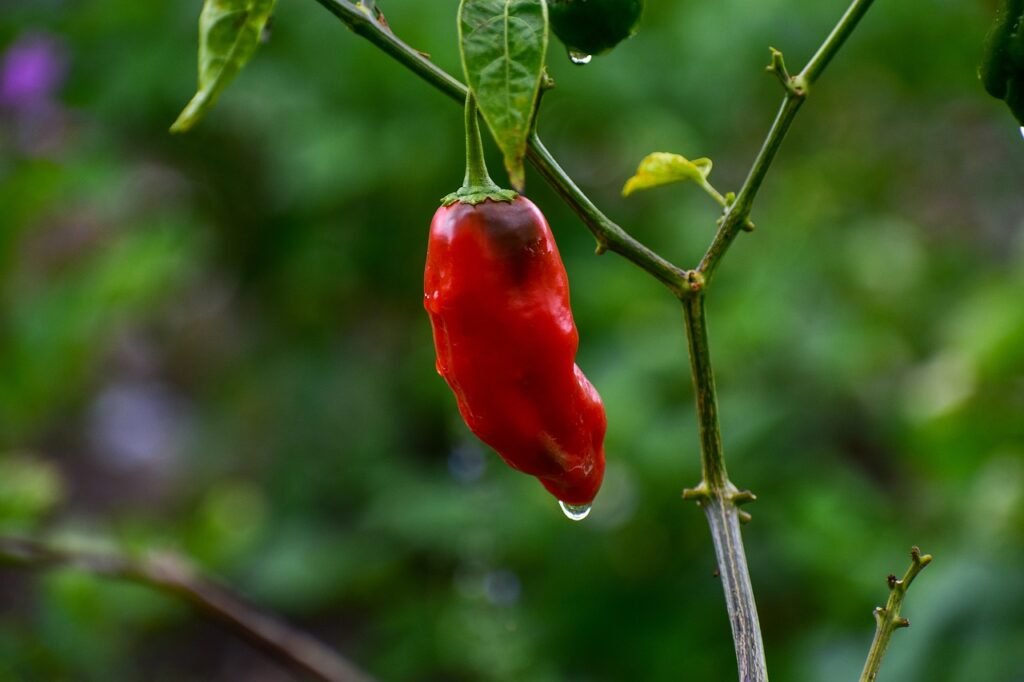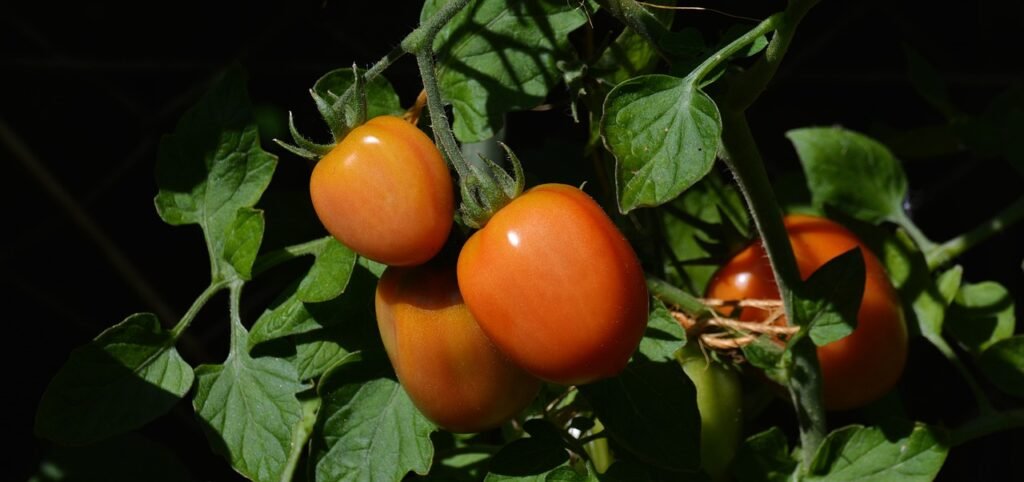
introduction
Are you ready to add a gusto of excitement to your theater ? Look no further than the Peter Pepper chili factory! This unique and visually striking chili variety is n’t only a discussion starter but also a scrumptious addition to any kitchen. Whether you are a seasoned gardener or a newbie looking to season effects up, growing Peter Pepper chili plants can be a satisfying and delightful experience. In this comprehensive companion, we’ll explore everything you need to know about cultivating these fascinating plants. From their origins and characteristics to step- by- step growing instructions and culinary uses, we have got you covered. So, let’s dive in and discover why the Peter Pepper chili factory deserves a spot in your theater ! What Makes Peter Pepper Chili plant Special?
A detail History
The Peter Pepper chili factory, scientifically known as Capsicum annuum, is a unique variety of chili pepper that has gained fashionability among gardeners and chili suckers likewise. Its origins can be traced back to Louisiana and Texas, where it was first cultivated. The factory gets its name from its distinctively shaped fruits, which act a certain part of the manly deconstruction – a point that has clearly contributed to its notoriety!
Appearance and Characteristics
Factory size Peter Pepper plants generally grow to a height of 1.5 to 3 bases. Leaves The shops have dark herbage, round- shaped leaves. Flowers Small, white flowers appear before the fruits develop. Fruits The peppers are 3- 4 elevation long and have a distinctive shape that sets them piecemeal from other chili kinds. Color The peppers start green and mature to a bright red color. Heat Level and Flavor Profile Peter Pepper chilis pack quite a punch when it comes to heat. They rate between 10,000 to 23,000 Scoville Heat Units( SHU), placing them in the medium-hot order. For comparison, jalapeños generally range from 2,500 to 8,000 SHU. Despite their heat, Peter Peppers offer a complex flavor profile with a slightly sweet and gooey taste that numerous chili suckers appreciate. Getting Started Preparing to Grow Peter Pepper Chili plants
Choosing the Right position
Peter Pepper chili plants thrive in warm, sunny surroundings. When opting a spot for your plants, keep the following factors in mind . Sun Choose a position that receives at least 6- 8 hours of direct sun daily. . Soil quality Peter Peppers prefer well- draining, nutrient-rich soil. . Protection from strong winds While these shops are fairly sturdy, they can profit from some sanctum against harsh winds. . Space Allow about 18- 24 elevation between shops to insure acceptable air rotation and room for growth. Soil Preparation
Preparing the soil
duly is pivotal for the success of your Peter Pepper chili plants. Follow these way to produce the ideal growing medium . Test your soil pH Peter Peppers prefer slightly acidic to neutral soil with a pH between 6.0 and 7.0. . Amend the soil If necessary, add organic matter similar as compost or well- rotted ordure to ameliorate soil structure and nutrient content. . insure good drainage If your soil tends to retain water, consider mixing in some beach or perlite to ameliorate drainage. . Add nutrients Incorporate a balanced, slow- release toxin into the soil before planting.
Can you save the seeds from your plants of chili peppers to utilize in future plant growth?
Of course! If you are a grower of chili peppers, you might wish to conserve the seeds from your current crop instead of buying fresh seeds every year. Not only does saving seeds save costs, but it guarantees that every season your crop will contain your favorite peppers. Chili peppers, fortunately for us, make excellent seed savers. The seeds are easy to harvest, and drying and storing them takes very little work. Planting Peter Pepper Chili Seeds
When to Plant
The timing of planting your Peter Pepper chili seeds is pivotal for their success. Then are some guidelines Inner starting Begin seeds outdoors 8- 10 weeks before the last anticipated frost date in your area. out-of-door planting Transplant seedlings or sow seeds directly outside when soil temperatures constantly reach 60 °F( 15 °C) or advanced. How to Plant Follow these way to plant your Peter Pepper chili seeds . Fill seed servers or small pots with a seed- starting blend. . Plant seeds about 1/4 inch deep. . Make sure the soil is consistently damp but not soggy. . Maintain a warm temperature( 70- 80 °F or 21- 27 °C) for germination. . Once seedlings crop , give plenitude of light to help leggy growth. Pro tip Use a heat mat to maintain optimal soil temperature for faster germination.
minding for Your Peter Pepper Chili plants Watering Proper
watering is essential for healthy Peter Pepper chili plants. Follow these guidelines Keep the soil moist but don’t overwater the chili peppers, just like you would with any other plant. Keep the soil around pepper plants in pots or containers from drying out entirely. Reduce the amount of watering you do when peppers begin to grow, but don’t let the soil dry up completely.
Fertilizing
Peter Pepper chili plants are heavy affluents and benefit from regular fertilization. Then is what you need to know Start fertilizing when the shops are about 6 elevation altitudinous. Use a balanced, water-answerable toxin every 2- 3 weeks during the growing season. Switch to a high- phosphorus toxin when flowers begin to form to promote fruit development. Avoid over-fertilizing, as this can lead to lush leafage but poor fruit product.
Do Not Overfertilize Your Pepper Plants
While excessive fertilizer application may promote the development of vibrant leaves and blossoms on the pepper plant, it inhibits pepper yield. For peppers, a good 5-10-10 fertilizer is generally plenty. Before transplanting, incorporate it into the soil. We employ a fish emulsion and seaweed solution.
Pruning and Support
While Peter Pepper chili plants do not bear expansive pruning, some conservation can ameliorate their health and productivity Remove any yellowing or diseased leaves instantly. Pinch off the growing tips when plants are youthful to encourage bushier growth. Consider using stakes or coops to support plants as they grow and bear fruit. Common Challenges and results
Pests
Peter Pepper chili plants can be susceptible to colorful pests. Then are some common bones and how to deal with them .
Aphids These bitsy insects can be controlled with insecticidal cleaner or a strong spray of water. Spider diminutives Increase moisture and use neem oil painting or insecticidal cleaner to combat these pests. .Whiteflies Use unheroic sticky traps or introduce natural bloodsuckers like ladybugs.
conditions
Keeping your shops healthy is the stylish defense against conditions. still, then are some common issues to watch out for . Blossom end spoilage Caused by calcium insufficiency, this can be averted by maintaining harmonious soil humidity and adding calcium to the soil if demanded. . fine mildew Ameliorate air rotation and avoid overhead watering to help this fungal complaint. . Bacterial splint spot Remove affected leaves and avoid working with shops when they are wet to help spread.
Harvesting Your Peter Pepper Chilis
When to Harvest
Knowing when to gather your Peter Pepper chilis is pivotal for optimal flavor and heat. Then is what to look for Color change Peter Peppers are generally gathered when they turn from green to bright red. Time frame Anticipate to start harvesting about 70- 80 days after broadcasting. Texture Ripe peppers should feel firm to the touch.
How to Harvest
Follow these way to gather your Peter Pepper chilis . Use clean, sharp scissors or pruning shears to cut the peppers from the factory. Just a tiny bit of the stem should remain connected to the pepper. . Handle the peppers precisely to avoid bruising. . Wear gloves to cover your skin from the capsaicin in the peppers. Storing and Using
Your Peter Pepper Chilis Storage styles Proper storehouse can help you enjoy your Peter Pepper chilis long after crop. Consider these options Fresh storehouse Keep ignoble peppers in a paper bag in the refrigerator for over to two weeks. indurating Chop or slice peppers and indurate in watertight holders for over to six months. Drying Hang whole peppers to state dry or use a food dehydrator for long- term storehouse. Culinary Uses Peter Pepper chilis are protean in the kitchen. Then are some ideas to spice up your cuisine Hot gravies produce your own unique mix using Peter Peppers as the base. Salsa Add finely diced Peter Peppers to your favorite salsa form for redundant heat. Chili Use these peppers to give your chili dish an redundant kick. Pickled peppers save your crop by pickling the peppers in ginger and spices. Caution Flash back that Peter Peppers are relatively hot. Start with small quantities and acclimate to your taste preferences.
Saving Seeds for unborn Planting
still, you might want to save seeds for coming season, If you’ve enjoyed growing Peter Pepper chili shops. Then is how . Choose completely ripe peppers from healthy shops. . Scrape out the seeds after cutting the pepper open. . Spread the seeds on a paper kerchief to dry for several days. . Store dried seeds in a cool, dry place in an watertight vessel. Note Peter Peppers are open- pollinated, so saved seeds should produce shops true to the parent. still, if you are growing multiple pepper kinds, cross-fertilization may do.
Conclusion Embracing the Peter Pepper Experience Growing
Peter Pepper chili shops is further than just gardening – it’s an adventure in horticulture and culinary disquisition. From their unique appearance to their fiery flavor, these peppers offer a satisfying experience for gardeners of all situations. Flash back, success with Peter Pepper chili shops comes down to furnishing the right conditions plenitude of sun, well- draining soil, harmonious care, and a bit of tolerance. With the knowledge you’ve gained from this companion, you are well- equipped to start your Peter Pepper trip. Whether you are looking to add some spice to your theater , produce discussion- starting hot gravies, or simply enjoy the satisfaction of growing your own chilis, Peter Pepper shops are an excellent choice. So why not give them a try? Your taste kids – and your theater – will thank you! Happy growing, and may your Peter Pepper crop be bountiful and racy!



